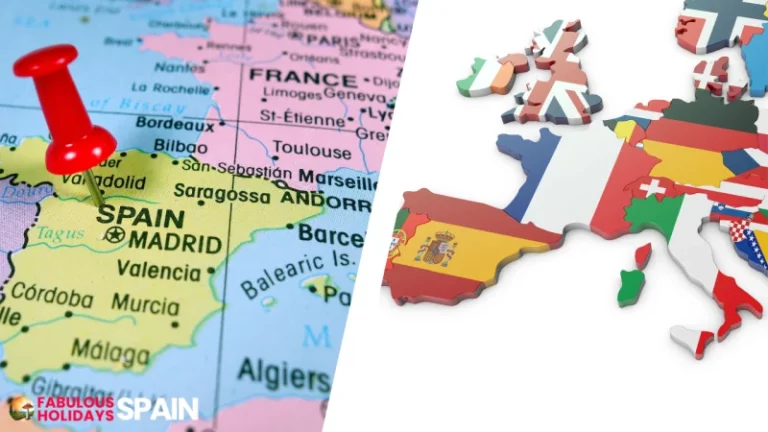21 Most Popular Spanish Breakfast Foods to Fuel Your Tourist Adventure
Forget elaborate spreads and fussy preparations. In Spain, breakfast is a simple pleasure and fresh, local ingredients.
Whether it’s a quick bite at a busy café or a laid-back affair at home, each meal is an opportunity to enjoy the region’s flavours and experience the unique charm of Spanish breakfast foods.
From the iconic pan con tomate (toasted bread rubbed with garlic, olive oil, and ripe tomato) to warm, sugary churros dipped in thick chocolate, Spanish breakfast foods are as diverse as the country itself.
Fuel Your Day with Simple, Flavorful Spanish Breakfast Foods
Whether you’re exploring bustling cities or charming villages, you’ll find unique specialities that reflect the traditions and tastes of each region, offering a delicious glimpse into the world of Spanish breakfast foods.
Prepare for a culinary adventure like no other. The one that will awaken your taste buds and introduce you to the heart of Spanish culture through their beloved breakfast foods.
This culinary journey promises to be a delightful exploration of Spanish breakfast foods, inspiring you to recreate these traditional dishes in your home.
Meal times in Spain are unusual. No exaggeration – I was hungry because I went to eat dinner at 6 PM!
The Building Blocks of Spanish Breakfast Foods with Simple Ingredients, Big Flavors
A handful of humble yet essential ingredients are at the centrepiece of Spanish breakfast, shaping the landscape of Spanish breakfast foods.
Combined in simple yet creative ways, these staples form the basis of a culinary tradition that is both satisfying and deeply rooted in the country’s landscape and culture.
Bread
Bread is an indispensable part of breakfast. It is a cornerstone of the Spanish diet and a key component of Spanish breakfast foods.
There’s a loaf for every taste, from crusty baguettes to the airy pan de cristal (literally “glass bread” for its thin, delicate texture).
Regional variations abound, each with its own characteristics and flavour profile, offering diverse options for enjoying Spanish breakfast foods.
Olive Oil
Olive oil is the lifeblood of Spanish cuisine. It is drizzled generously over bread, used to fry eggs, and even incorporated into sweet treats, making it a fundamental element of many Spanish breakfast foods.
The country produces a wide variety of olive oils, each with its distinct flavour profile, from the fruity Arbequina to the more robust Picual.
These oils add depth and complexity to Spanish breakfast foods.
Tomatoes
Ripe, juicy tomatoes are on the Spanish breakfast table and an essential ingredient in many Spanish breakfast foods.
Just imagine, in winter, tomatoes are as tasty as in the summer, but they are just more expensive. Spain is a warm country, so veggie production is often local.
I often sit in the sun on a terrace in January and eat yummy tomatoes. I could only dream about them back in Slovenia. Absolutely incredible!
Whether grated onto toast, sliced into wedges, or blended into a salsa, they add freshness and acidity that complements the other flavours perfectly, enhancing the overall taste of Spanish breakfast foods.
Ham
A beloved delicacy and a frequent feature in Spanish breakfast foods, Spanish ham (jamón) comes in various forms, from the cured Serrano to the prized Ibérico.
Thinly sliced and served alongside bread and cheese, it adds a salty, savoury dimension to Spanish breakfast foods, creating a well-balanced and satisfying meal.
Cheese
Spanish cheeses are as diverse as the regions they hail from and are often included in various Spanish breakfast foods. From the creamy Manchego to the pungent Cabrales, there’s a cheese to suit every palate.
Crumbled over toast or enjoyed on its own, cheese is a welcome addition to any breakfast spread, adding richness and depth to the overall flavour profile of Spanish breakfast foods.
My favourite is ‘queso curado,’ which I leave at room temperature for 30 minutes to soften and become seriously tasty.
Eggs
Whether fried, scrambled, or baked into a tortilla, eggs are a versatile protein source that can be prepared in countless ways and are commonly found in many Spanish breakfast foods.
They offer a nutritious and satisfying addition to the breakfast table, ensuring a well-rounded and fulfilling start to the day.
By understanding the key ingredients and their variations, you’ll be well on your way to mastering the art of Spanish breakfast and appreciating the diverse flavours and textures in Spanish breakfast foods.
So, grab a cup of café con leche, pull up a chair, and get ready to discover the simple yet delicious flavours that make this morning ritual so special, immersing yourself in the world of Spanish breakfast foods.
21 Must-Try Spanish Breakfast Foods
Prepare your taste buds for a delicious adventure as we dive into the diverse world of Spanish breakfast cuisine.
From savoury to sweet, these 21 dishes offer a glimpse into the regional flavours and traditions that make Spain a culinary paradise.
1. Pan con Tomate (Tomato Bread)
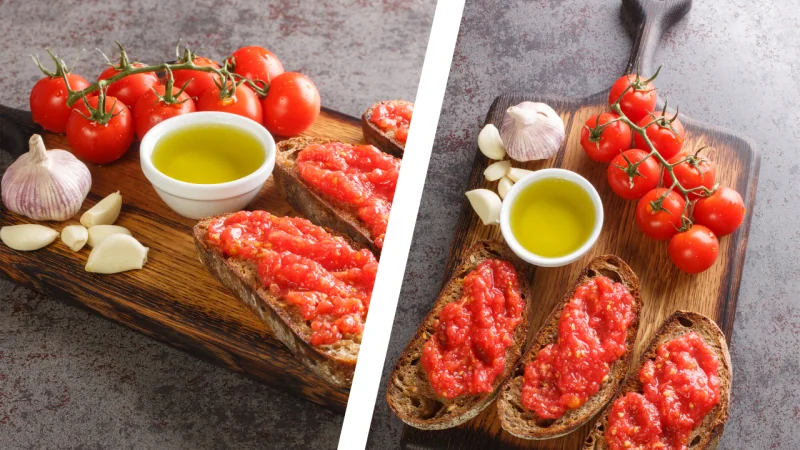
This iconic dish is simplicity at its finest. It features toasted bread rubbed with garlic, olive oil, and ripe tomato.
2. Churros con Chocolate
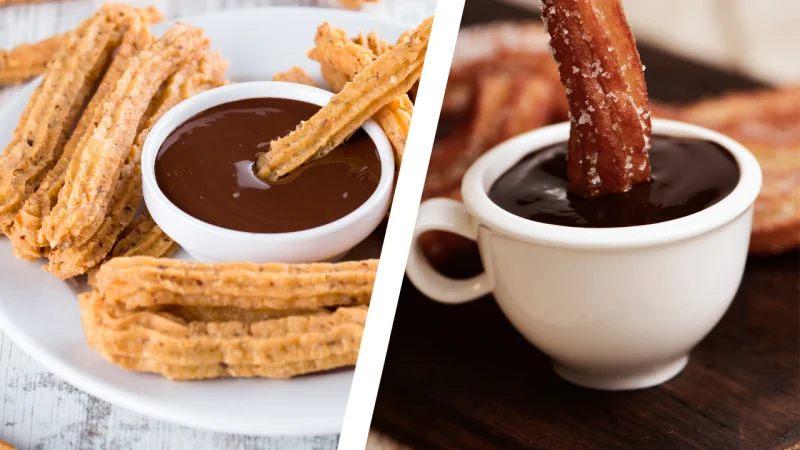
Crispy, fried dough pastries dipped in thick, rich hot chocolate. Fried on the spot at Fallas in Valencia! You have to visit!
3. Tostada con Jamón y Aceite (Ham and Oil Toast)
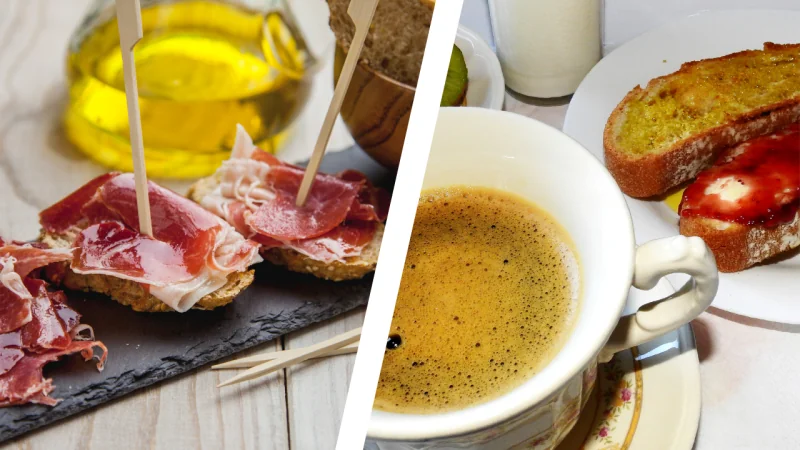
Toasted bread topped with thinly sliced cured ham and a drizzle of olive oil.
4. Tortilla Española (Spanish Omelette)
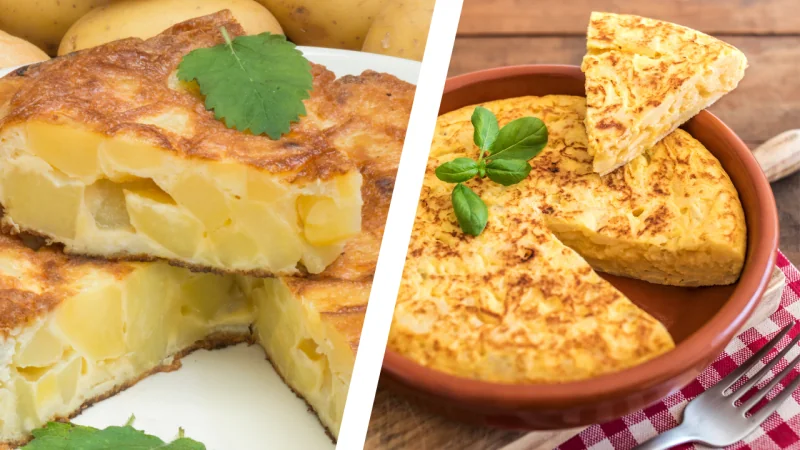
A hearty dish made with potatoes, onions, and eggs.
5. Pincho de Tortilla:
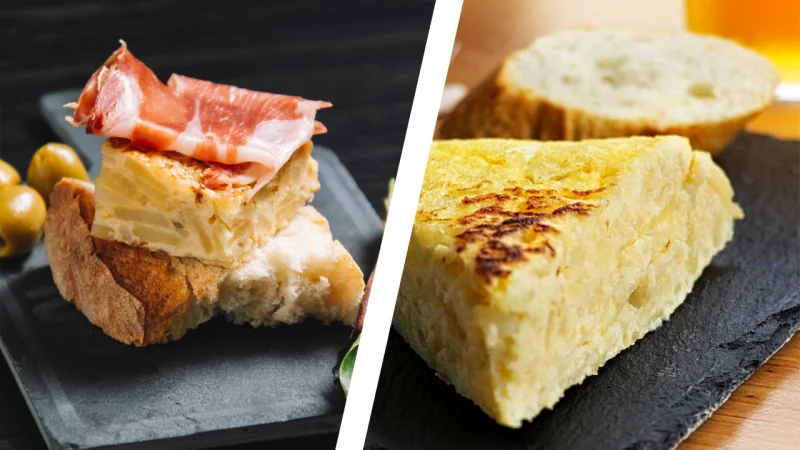
A smaller, bite-sized version of the tortilla española, often served on a toothpick.
6. Bocadillo de Jamón (Ham Sandwich):
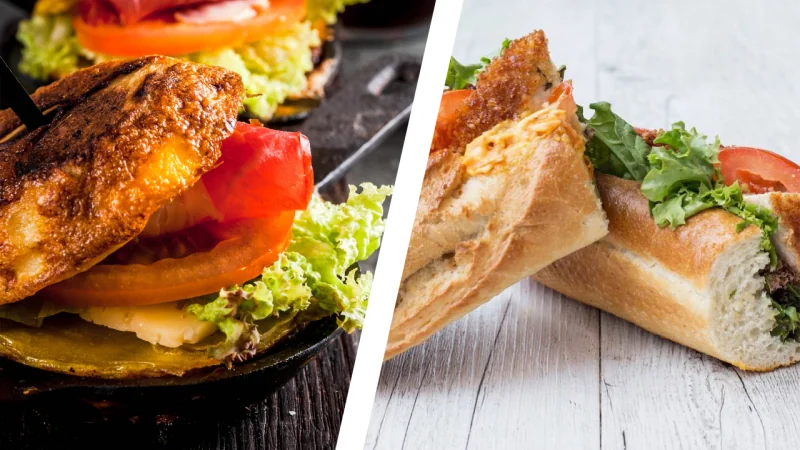
A simple yet satisfying sandwich filled with cured ham.
7. Café con Leche (Coffee with Milk):

Strong espresso paired with steamed milk.
8. Zumo de Naranja (Orange Juice)

Freshly squeezed orange juice, often made with local oranges.
9. Magdalenas (Spanish Cupcakes)

Fluffy, individual-sized cakes, often flavoured with lemon or vanilla.
10. Pan Tumaca (Catalan Tomato Bread)
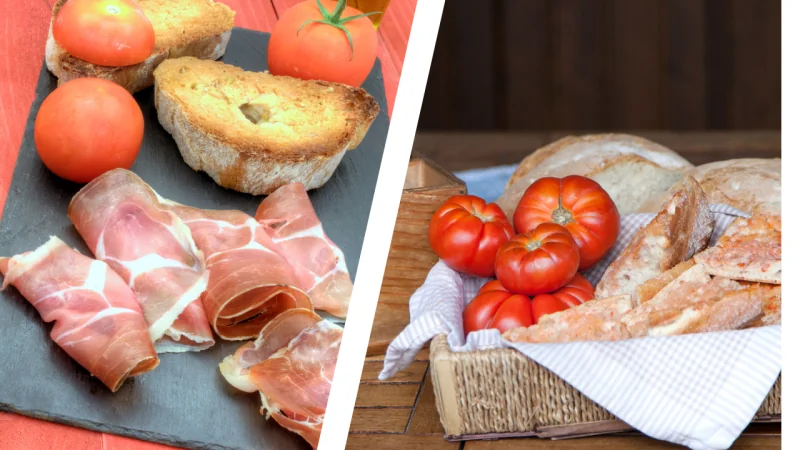
Similar to pan con tomate but with a more pronounced garlic flavour.
11. Mollete Antequerano (Antequera Roll)
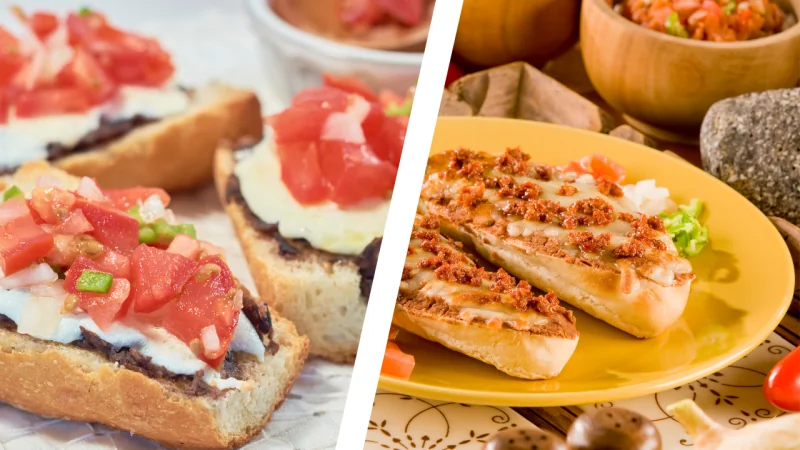
A soft, round bread roll is typically toasted and filled with ingredients like ham, cheese, or olive oil.
12. Sobrasada con Miel (Sobrasada with Honey):
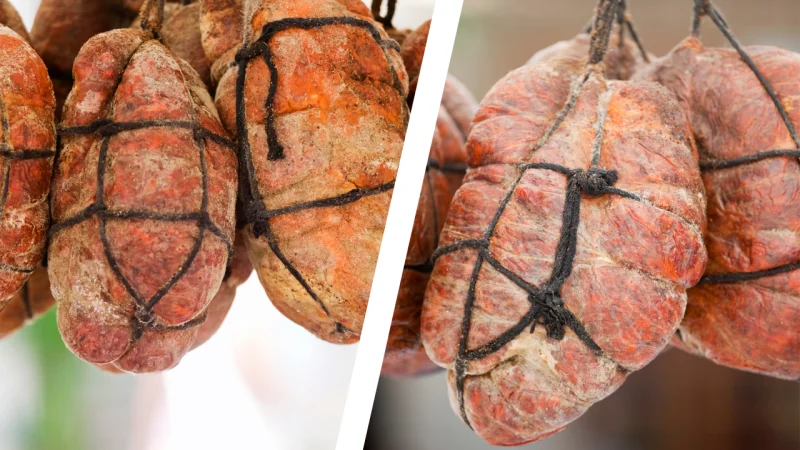
A spreadable sausage made with pork, paprika, and spices, often served with honey.
13. Huevos Rotos (Broken Eggs):
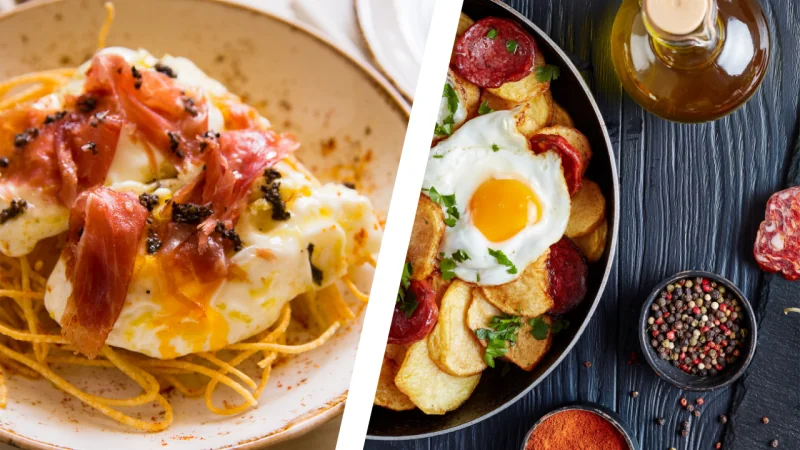
Fried eggs are served over fried potatoes and often topped with ham or chorizo.
14. Pitufo (Small Sandwich):
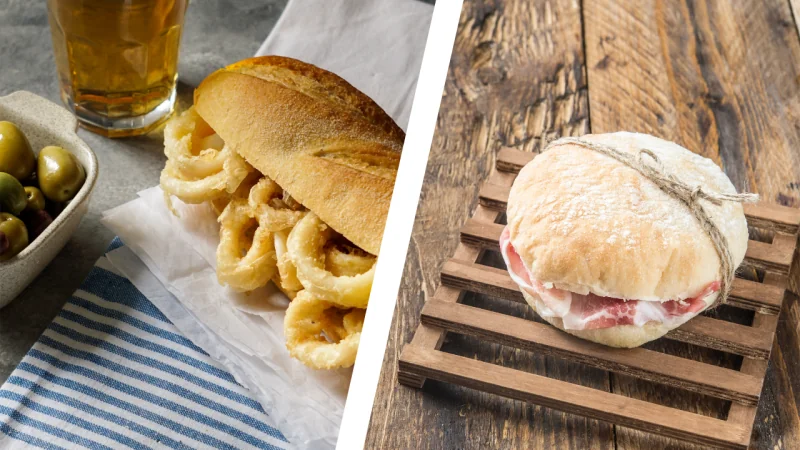
A smaller version of a bocadillo, often filled with ham and cheese or other simple ingredients.
15. Porras (Fried Dough):
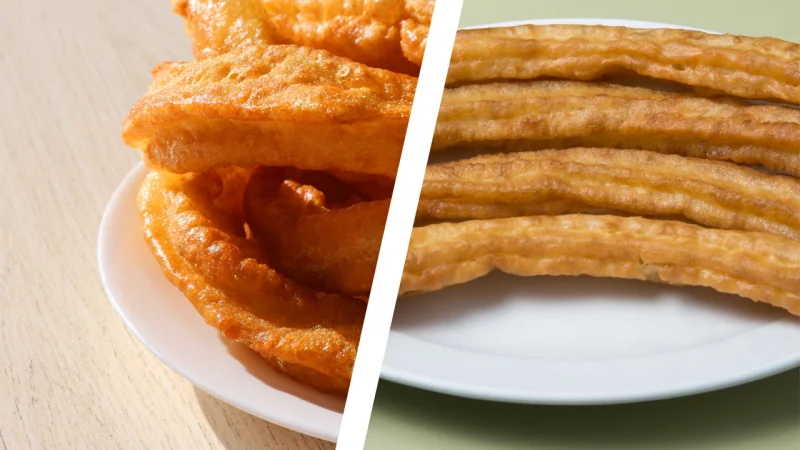
Similar to churros but thicker and denser.
16. Leche Merengada (Spanish Meringue Milk):

A cold, sweet beverage made with milk, sugar, egg whites, and cinnamon.
17. Cola Cao (Chocolate Milk):
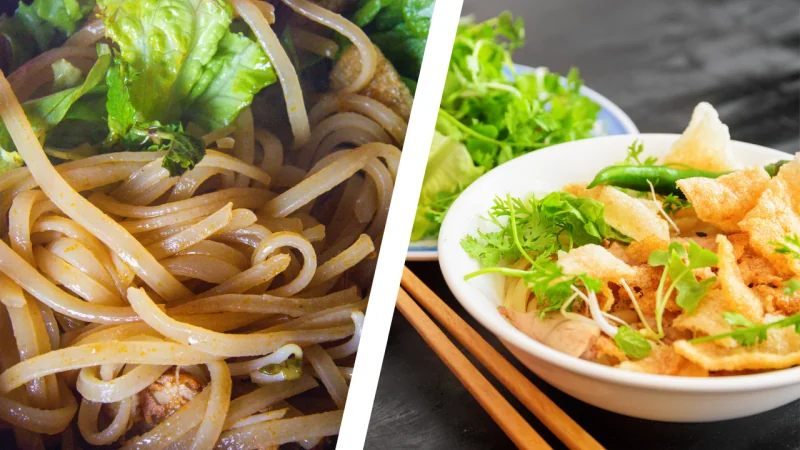
A popular Spanish brand of chocolate milk powder, often enjoyed by children and adults.
18. Bizcocho (Sponge Cake):
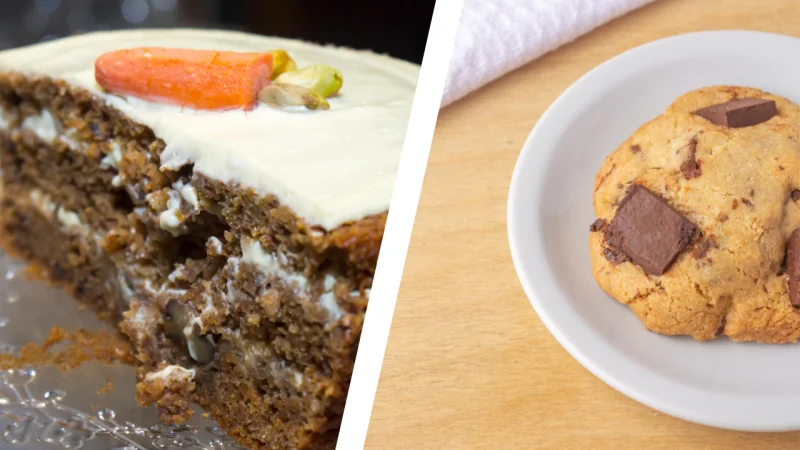
A light and fluffy cake is often served for breakfast or as a snack.
19. Ensaimada (Mallorca Pastry):
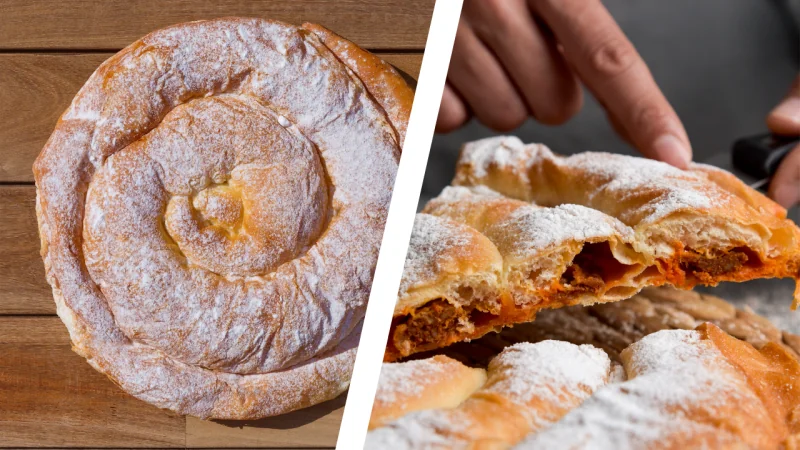
A spiral-shaped pastry made with lard, often filled with cream or custard.
20. Pan con Aceite y Sal (Bread with Oil and Salt):
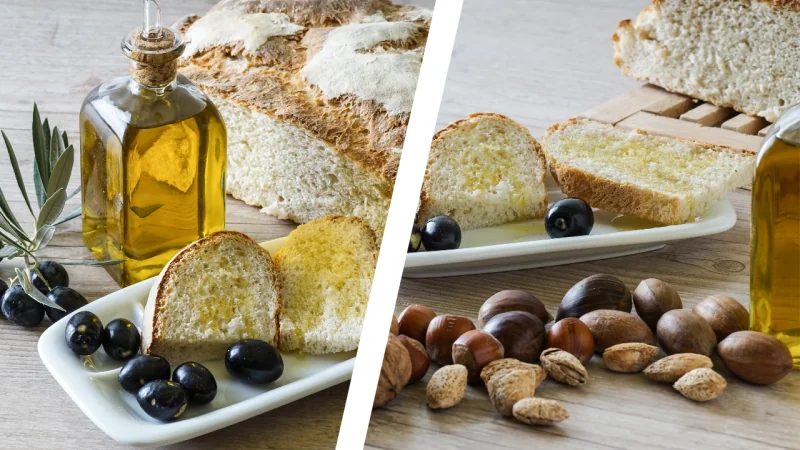
A simple yet flavorful combination of bread drizzled with olive oil and sprinkled with salt.
21. Café Solo (Espresso):
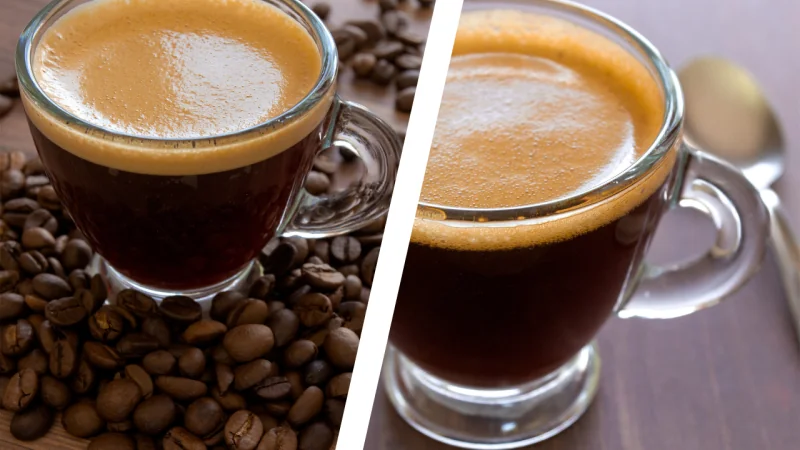
A small, strong coffee is typically served in a demitasse cup.
*Each of these dishes can be adapted to dietary preferences and restrictions. Vegetarian and vegan options are often available, and gluten-free bread can be substituted for those with sensitivities.
Don’t be afraid to experiment with different combinations and flavours to create your personalised Spanish breakfast experience.*
Regional Breakfast Traditions in Spain
Its regional breakfast specialities reflect Spain’s diverse landscape and rich culinary heritage.
Each corner of the country boasts unique dishes highlighting local ingredients and traditions, offering a delicious glimpse into the distinct flavours and cultures shaping the Spanish culinary scene.
Valencia
Breakfast in Valencia, while simple, is a beloved daily ritual deeply ingrained in the local culture.
Typically, it involves a light meal centred around coffee, most commonly a “café con leche” (coffee with milk). This is often paired with something sweet, such as a “valenciana” (a type of muffin), or savory, like the iconic “pan con tomate” (toasted bread with tomato and olive oil).
While breakfast at home is common, grabbing a coffee and a bite at a local café or bakery is also popular. This provides a social start to the day. Spanish people take every chance to socialize. They are such a graceful nation!
Andalusia
In the sun-drenched south, Andalusians start their day with hearty tostadas, thick slices of bread topped with various ingredients.
Popular options include tostada con Manteca colorá (toasted bread with a spread made from pork fat and paprika), tostada con aceite y tomate (toasted bread with olive oil and tomato), and tostada con jamón ibérico (toasted bread with Ibérico ham).
Catalonia
The northeastern region of Catalonia is famous for its pa amb tomàquet (bread with tomato), a simple yet flavorful dish made by rubbing toasted bread with garlic, tomato, and olive oil.
Often enjoyed with a slice of Manchego cheese or Serrano ham, it’s a staple of Catalan cuisine.
Madrid
The capital is renowned for its churros con chocolate, a beloved breakfast treat consisting of crispy, fried dough pastries dipped in thick, rich hot chocolate.
Typically enjoyed on weekends or special occasions, it’s a sweet indulgence that will satisfy your cravings.
Basque Country
Pintxos (small snacks) are a popular breakfast option in the northern Basque Country.
These bite-sized creations can be found in bars and cafes throughout the region and often feature fresh seafood, cured meats, or local cheeses.
Galicia
The northwestern region of Galicia is known for its fresh seafood and hearty dishes. A typical Galician breakfast might include tortilla de patatas (Spanish omelette), empanada gallega (a savoury pie filled with meat or fish), or filloas (thin crepes made with flour and milk).
By exploring Spain’s regional specialities, you’ll discover new and exciting flavours and gain a deeper understanding of the country’s culinary traditions and cultural diversity.
The Cultural Significance of Spanish Breakfast Foods
A Social Ritual In Spain, breakfast isn’t just about food; it’s a cherished social ritual centred around traditional Spanish breakfast foods.
Unlike the hurried breakfasts common elsewhere, Spanish mornings are leisurely, shared with loved ones over various Spanish breakfast foods.
Cafés:
The Heart of Spanish Breakfast Culture Cafés and bars are central to Spanish mornings and offer an array of Spanish breakfast foods.
Locals gather here to chat, read the news, and bond over coffee and pastries, a popular choice among Spanish breakfast foods, making it an integral part of their daily routine.
Sharing Spanish Breakfast Foods at Home
Breakfast’s social significance extends to homes, where families gather to enjoy simple, delicious Spanish breakfast foods and connect before starting their day.
This shared meal of Spanish breakfast foods is a cornerstone of Spanish culture.
Simplicity and Freshness in Spanish Breakfast Foods
Unlike elaborate lunches and dinners, Spanish breakfasts emphasise light, simple fare, often showcasing fresh, local ingredients in traditional Spanish breakfast foods.
This reflects a broader cultural appreciation for unpretentious yet flavorful cuisine regarding Spanish breakfast foods.
Beloved Traditions of Spanish Breakfast Foods
While regional variations exist, some traditions are widespread. Café con leche (coffee with milk) is a staple, often paired with pastries or tostada, and is popular among Spanish breakfast foods.
Freshly squeezed orange juice is another popular morning refreshment, complementing the flavours of various Spanish breakfast foods.
Embrace the Spanish Breakfast Experience
Immersing yourself in the cultural significance of breakfast in Spain offers a deeper understanding of the country’s unique way of life.
By tasting traditional Spanish breakfast foods and participating in the morning rituals, you’ll connect with the heart of Spanish culture and create lasting memories centered around the delightful world of Spanish breakfast foods.




